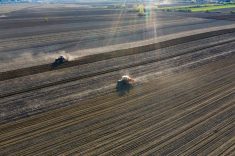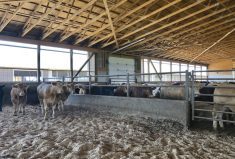Many farmers can tell stories of break-ins, stolen vehicles or stolen fuel.
This trend isn’t only anecdotal: crime rates are going up in rural areas. According to Statistics Canada, 21 per cent of crime in 2017 took place in rural areas, with rates of violent crime 63 per cent higher in rural communities than urban communities, and rates of property crime 10 per cent higher.
In Manitoba, rural crime rates were 42 per cent higher than urban crime rates in 2017. In Alberta, rural crime exceeded urban crime by 38 per cent, and in Saskatchewan, by 36 per cent.
Read Also

Cancer agency reclassifies another herbicide ‘probably carcinogenic’
The WHO’s cancer research agency has now put atrazine, a herbicide well known to corn growers, in the same potential-hazard category where the agency put glyphosate.
“These rates directly reflect the increase in HD Video Surveillance and Smart Security systems we are installing for farmers and cabins,” says Virgil Reed, founder and CEO of Saskatoon-based Reed Security.
“We often have inquiries about farmyard protection that includes coverage on homes, shops, barns, bins, storage sheds, equipment and fuel tanks.
“Farmyards are at risk due to slow RCMP response time,” says Reed. The police don’t have enough manpower to service rural areas and distances are a challenge.
Many farmers are leaving properties and vehicles locked at all times to deter theft, he says. But there are also technological solutions to help farmers feel secure. Reed Security offers a range of surveillance systems that can send alerts to farmers’ phones when someone enters their property, as well as remote video monitoring services whereby an emergency operator can log in remotely.
Systems are customizable to integrate with lighting to make it appear as though farmers are home even while travelling. And if intruders enter properties when farmers are home, emergency panic buttons can alert monitoring stations.
Make a plan
Reed says farmers can reduce vulnerability by creating a farm security plan just as they would create fire plans, so that they know exactly what to do in the event an unwanted guest enters their property.
Reed’s mantra is “cameras, not guns”: while most farmers do own firearms, Reed says the law is not in their favour if they decide to use them to defend their property.
“Farmers are embracing new security technology, but a number of farmers that I’ve spoken with wouldn’t hesitate to defend their property and families by any means necessary — including violence,” says Reed.
Cameras, on the other hand, can record footage 24 hours a day, seven days a week, and provide evidence for police investigations and insurance claims.
“They are a deterrent and provide accountability. They can instantly alert you when a visitor enters your yard. And they are safe and predictable,” says Reed.
Steve Johnston, senior director for commercial and farm at The Co-operators, says most insurers recognize that security systems help to reduce risk. The Co-operators provides discounts on premiums for security systems on farm dwellings and structures.
“If a security system exists, the discount may be built directly into how the insurer calculates the premium rather than requiring a negotiation,” says Johnston.

















